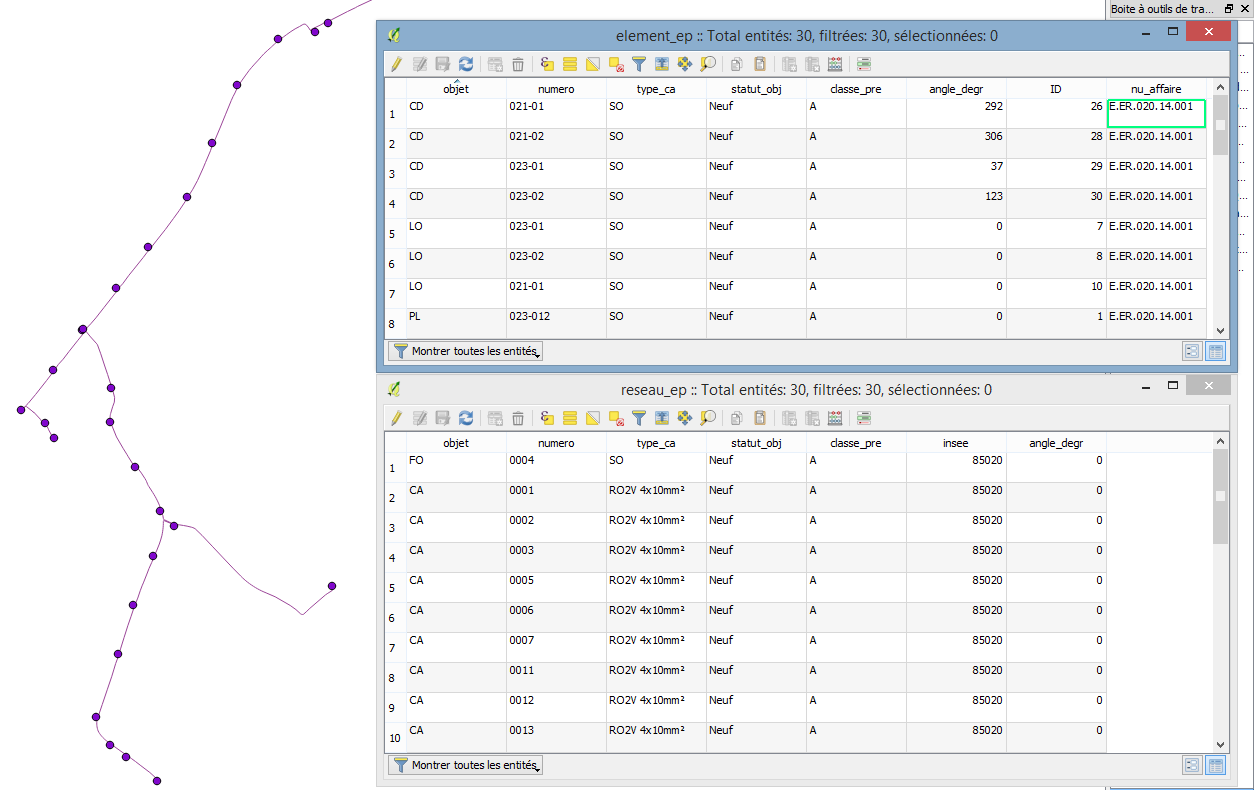Requirement:
- refFunctions plugin to use
geomnearest() and dbvalue().
- QGIS version: 2.16 or 2.18 to use
concatenate() expression in aggregate group.
As your Lines-Points is in 1-N relationship, most Field Calculator tasks have to be done on Point layer.
(1) On your "element_ep" Point Layer attributes, create a new text field (let's call it line) by:
geomnearest('reseau_ep', 'numero')
// This will add name of corresponding (nearest) line for each point.
// 'reseau_ep' is your target layer, which is the Line layer
// 'numero' is your line number in Line layer attributes
// NB. put them in single quotation marks.
(2) Also on the Point layer create a new string field (let's say strings) by:
concatenate("nu_affaire", group_by:="line", concatenator:=', ')
// This will create a concatenated text of nu_affaire, grouped by linenames obtained above.
// Note double quotation marks to wrap fields, and single for ', '.
Then close Point layer attribute table and go to "reseau_ep" Line layer
(3) Open attribute table of your Line layer and start Field Calculator. Create a new text field (shall we call it outcome?)
dbvalue('element_ep', 'strings', 'line', numero)
// This will lookup your Point layer (element_ep) and extract strings field.
// The condition is `line` = numero; i.e. key=`line` and value=numero
// NB. (again) put them in single quotation marks, except for numero (which is Value).
Final product is your Line layer attribute table, which has an outcome field in which you find combined text of all the points (nu_affairs) per each line.

